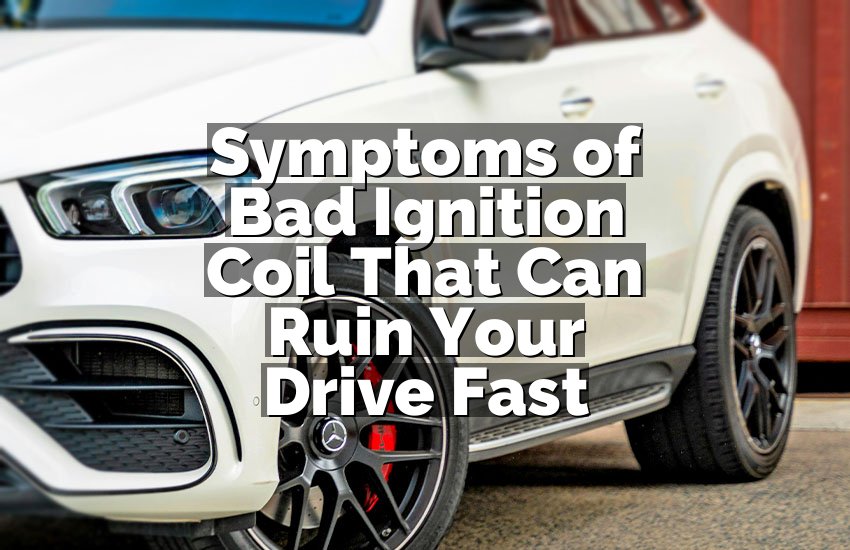It happens at the worst time. You rush to work, turn the key, and nothing. The van just sits there. The little red light blinks at you, almost laughing. Frustrating, right? A Ford Transit immobiliser problem can leave you late, stressed, and even angry. But don’t panic. With the right checks, you can understand what’s going on and what to do. Let’s go through it together in an easy way.
Ford Transit Immobiliser Problems: Complete Easy Fix Guide
Understanding the Immobiliser System
The immobiliser in a Ford Transit is designed for one main purpose. It stops the van from starting unless the correct key is used. This protects against theft. When it works right, you hardly notice it. But when it goes wrong, the van refuses to start, even if you have the right key.
The system uses a small chip inside the key. This chip talks to the van’s control unit. If the signal matches, the van starts. If the signal fails, the immobiliser blocks the ignition. The red light on the dashboard often shows the problem. A quick blink or steady flash can give a clue.
When the signal fails, it may be due to several reasons. Sometimes it is the key itself. Sometimes it is the antenna ring near the ignition. Other times it is the control unit. Understanding these basics makes it easier to decide what to check first.
By knowing how it works, you reduce confusion. You also save time when talking to a mechanic. Clear communication always helps. So, the first step is simple: know what the immobiliser is and why it matters.
- Stops the van from starting without the right key
- Works with a chip inside the key and the control unit
- Red light on dash shows errors
- Issues can be with the key, antenna, or control unit
Checking the Key and Chip
Many Ford Transit immobiliser problems start with the key. Inside the key is a small chip. If that chip is damaged, cracked, or worn, the system cannot read it. Sometimes the chip even falls out of the key housing without notice.
Another common issue is the battery in the key fob. While the immobiliser chip does not rely on the battery, modern fobs often do. A weak battery may stop the key from sending a clear signal. Replacing the small coin battery is quick and cheap, so it is worth trying first.
If you have a spare key, this is the moment to test it. If the spare starts the van, then the original key has the problem. If both keys fail, then the fault is deeper in the system. This simple test saves a lot of guessing and worry.
Sometimes the key just needs to be reprogrammed. Keys lose coding, especially after battery changes or electrical issues. A dealer or auto locksmith can reprogram it quickly. It may cost money, but it solves many problems.
- Chip inside key may be damaged
- Battery in fob may be weak
- Spare key test helps find the fault
- Reprogramming may fix coding errors
Looking at the Dashboard Light
The small red light on the dashboard is your guide. When you turn the key, watch it carefully. If it flashes fast, it usually means the key signal is wrong. If it stays on steady, it often points to a system fault.
A blinking light can make you feel lost, but it is actually useful. It tells you the immobiliser is active. It also warns that something does not match. This simple clue helps you decide whether to focus on the key, the wiring, or the control unit.
Some drivers ignore the light, thinking it is just a minor warning. That is a mistake. The immobiliser light is central to finding the cause. Even the pattern of the flash can sometimes be decoded into error codes. Mechanics often use this method to find the fault quickly.
By paying attention to the dashboard light, you save time and reduce stress. Instead of random guessing, you follow clear signs. That alone makes repairs faster and less costly.
- Flashing light shows mismatched key signal
- Steady light shows possible system fault
- Light patterns can help decode errors
- Ignoring the light delays repair
Inspecting the Wiring and Antenna Ring
Near the ignition barrel is a small antenna ring. This ring reads the signal from the key chip. If it is loose, cracked, or corroded, it fails to read. Many immobiliser problems come from this simple part.
Wiring is another hidden issue. Loose connections, moisture, or broken wires around the ignition can stop the signal. Vans that face damp weather or heavy use often suffer from these wiring problems. A quick inspection under the steering column may reveal obvious damage.
If you are comfortable, gently move the wires while turning the key. If the van suddenly starts, you know the wiring is at fault. This test should be done carefully, but it often confirms the issue fast.
Replacing the antenna ring is not expensive. Fixing wires may take time but is not complex. Always check these before replacing bigger parts. It is a smart way to save money.
- Antenna ring near ignition may fail
- Wiring damage often causes signal loss
- Moisture and corrosion are common issues
- Replacing ring or fixing wires is affordable
Resetting or Reprogramming the System
Sometimes the immobiliser simply needs a reset. Electrical surges, low batteries, or sudden disconnects can confuse the system. Resetting clears the memory and allows the van to accept the key again.
One common method is to disconnect the van battery. Leave it off for about 30 minutes. Reconnect and try starting again. This may reset the system, though it does not always work. Still, it is free and worth a try before costly repairs.
If a reset fails, reprogramming may be needed. Dealers and some locksmiths have the tools to link the key chip to the van again. This process ensures the system and key match perfectly. Without reprogramming, the van may never recognise the key.
Though reprogramming costs money, it is often the final solution. Once complete, the immobiliser usually works smoothly again. And you regain confidence that your van will start every time.
- Battery disconnect may reset system
- Reprogramming links key to van
- Reset is free, reprogram costs money
- Both restore trust in the immobiliser
When to Call a Professional
Sometimes no matter what you try, the van still will not start. At that point, it is better to call a professional. Auto locksmiths and Ford specialists have tools and experience that save time.
Trying too many home fixes can make the problem worse. Incorrect wiring checks, broken key shells, or failed resets may add new faults. Professionals know the safe way to test without causing damage.
Cost is always a concern. But wasting hours or replacing the wrong parts also costs money. A professional diagnosis may seem expensive at first, but it is often cheaper in the end.
If you rely on your Transit for work, do not delay. A van that does not start means missed jobs and lost income. A quick fix from a trusted expert keeps you moving.
- Professionals save time and stress
- Wrong fixes add more damage
- Diagnosis cost may save money overall
- Fast repair prevents lost income
| Issue | Clue | Simple Action | Possible Fix |
|---|---|---|---|
| Key chip fault | Van does not start with one key | Try spare key | Replace or reprogram key |
| Weak fob battery | Remote fails | Change coin battery | Replace battery |
| Dash light flashing | Fast blink | Focus on key signal | Reprogram or replace key |
| Dash light steady | Stays on | System fault likely | Check wiring or control unit |
| Antenna ring fault | No signal read | Inspect ignition area | Replace antenna ring |
| Wiring damage | Intermittent start | Check under column | Repair or replace wires |
| System confusion | After battery issue | Reset battery | Reprogram system |
Do Ford Transit immobiliser problems drain the battery?
Ford Transit immobiliser problems can sometimes drain the battery, but not in every case. When the system fails, the immobiliser light may keep flashing even after the van is off. This small blinking seems harmless, but over time it can slowly drain the battery. A weak or flat battery then adds a second problem on top of the first one.
Another way the battery gets drained is when drivers keep trying to start the van. Long repeated key turns use power, especially in cold weather. The starter motor pulls energy, and the immobiliser prevents ignition. In the end, the battery loses strength faster than normal.
In some cases, wiring issues linked to the immobiliser also drain the battery. Moisture or poor connections cause small power leaks. These leaks are not obvious at first. But after several days, the battery shows weakness. It is a hidden effect that many drivers do not notice until too late.
To prevent battery drain, pay attention to warning signs. If the immobiliser light stays on, fix the issue quickly. If the van struggles to start, avoid repeated attempts. A simple battery test at a garage can confirm if the drain is happening. This proactive check helps you stay safe and avoid being stranded.
Can a Ford Transit immobiliser be bypassed safely?
Bypassing a Ford Transit immobiliser is not a safe or legal solution for most drivers. The immobiliser is part of the van’s security system. Its purpose is to stop theft. Bypassing it removes that safety, leaving the van open to risk. Insurance companies may even refuse claims if the system is disabled.
However, some situations lead owners to ask about bypassing. For example, when the van fails in a remote area or when repairs are costly. In such cases, a professional locksmith may perform temporary fixes to move the van. But these are short-term measures, not long-term solutions.
The safe way is always to repair or reprogram the immobiliser properly. A working system protects your vehicle and your work. Even if bypassing seems easier, the risks are much higher. It may lead to bigger electrical faults, failed MOT checks, and legal issues.
So, the answer is simple. Do not bypass the immobiliser unless a certified expert advises for a special reason. Instead, invest in the correct repair. That way, your van stays safe, legal, and reliable.
Do Ford Transit immobilisers fail more in cold weather?
Cold weather often makes Ford Transit immobiliser problems worse. Low temperatures affect batteries, wiring, and electronics. A weak battery in winter may fail to power the immobiliser system properly. The key signal may not get through, and the van refuses to start.
Moisture in cold weather is another issue. Condensation collects inside wiring and connectors. Frozen moisture can damage contacts or block signals. As a result, the immobiliser fails more often when the weather is damp and freezing.
Keys are also affected. Cold temperatures sometimes shrink materials, causing loose connections inside the key. If the chip cannot stay in contact, the signal drops. This problem appears only in winter for many drivers.
To reduce cold-related failures, keep the van battery strong. Store spare keys safely and dry. If possible, park the van in a garage or use covers in icy conditions. Simple care reduces immobiliser stress in winter months. With these habits, your Transit stays ready even in the coldest mornings.
Can a Ford Transit still start with immobiliser faults?
Sometimes a Ford Transit may still start with immobiliser faults, but not always. The system is designed to block the engine completely. If the fault is only partial, such as a weak key signal, the van may start after several attempts. But this is rare and unreliable.
In many cases, the immobiliser stops the van from cranking at all. The starter motor may turn, but the engine will not fire. This is because the fuel injection and ignition are locked by the system. Without a matching key signal, the van remains silent.
Some drivers notice the van starts one day and fails the next. This on-and-off behaviour shows the immobiliser is unstable. It can leave you stranded at any moment. Even if the van runs today, tomorrow it may refuse completely.
So, while it is possible for the Transit to start with small faults, it is not safe to depend on it. The only smart move is to fix the immobiliser fully. That way, your van starts every time with confidence and peace of mind.
Frequently Asked Questions (FAQs)
Is it expensive to fix a Ford Transit immobiliser?
Fixing a Ford Transit immobiliser can range from cheap to costly. If the issue is only a weak fob battery, the fix costs just a few pounds. If the chip inside the key is damaged, replacing or reprogramming it may cost more but is still affordable compared to bigger repairs. However, if the control unit itself is faulty, the price rises quickly. Dealers often charge higher rates for diagnostics and programming. Auto locksmiths may offer lower prices but still ensure quality. Overall, the cost depends on the part causing the failure. The good news is that many problems are minor and fixed quickly.
Can a spare key solve immobiliser issues?
Yes, a spare key often solves immobiliser issues. Many drivers overlook this simple test. If the van starts fine with a spare, then the original key is the fault. The chip inside may be cracked, loose, or uncoded. Using a spare avoids delay and confusion. It also proves that the system itself is not broken. However, if both keys fail, the problem is deeper. That means checking the antenna ring, wiring, or control unit. So, before booking costly repairs, always test with a spare key first.
Do I need a dealer to reprogram my Ford Transit key?
Not always. While dealers can reprogram Ford Transit keys, many auto locksmiths also offer this service. Locksmiths are often faster and cheaper than main dealers. They carry mobile tools and can come to your location. This is very useful when the van will not start at all. Dealers may need you to tow the van to them, which adds cost. However, in some complex cases, only dealers have the official software. It depends on the year and model of your Transit. But in most cases, a locksmith is enough.
Is it common for Ford Transit immobilisers to fail suddenly?
Yes, sudden failure is common. One day the van works fine, the next it does not start. This often happens because the chip signal breaks without warning. A key may crack inside, or wiring may lose contact. Moisture and vibration add to the sudden nature. That is why drivers feel shocked when it happens out of nowhere. The best prevention is keeping a spare key ready, checking wiring regularly, and replacing weak batteries in fobs. With simple habits, sudden breakdowns become less frequent.
Can a weak van battery trigger immobiliser problems?
Yes, a weak van battery can trigger immobiliser problems. The system needs stable power to read the key signal. If the battery voltage drops, the control unit may fail to recognise the key. Drivers often confuse this with a broken key when it is just a weak battery. Replacing or charging the van battery often restores normal function. So, when facing immobiliser errors, always check the main battery first. It may save time and money.
Do I risk being stranded if I ignore immobiliser faults?
Yes, ignoring immobiliser faults puts you at high risk of being stranded. The system may work today and fail tomorrow. Many drivers delay fixing small warning signs, like flashing lights or slow starts. But once the immobiliser blocks the van fully, it cannot be driven at all. Towing becomes the only option. Fixing the issue early saves stress, money, and lost time. It also keeps your van reliable for work or travel.
Is it possible to reset a Ford Transit immobiliser at home?
Yes, it is sometimes possible. Disconnecting the van battery for about half an hour may reset the system. Reconnecting it may allow the key to be read again. However, this is not always effective. Some faults require proper programming with tools. While trying a reset is free and easy, do not depend on it fully. If the reset fails, call a locksmith or dealer for reprogramming. That ensures a lasting solution.
Do I need special tools to check the immobiliser wiring?
Basic checks can be done without special tools. Looking under the steering column for loose or corroded wires is often enough. Moving wires gently while turning the key may show if the fault is there. But deeper tests, like measuring voltage or resistance, need tools. If you are not confident, it is safer to call a professional. Wrong handling of wires may cause more faults. So, simple checks are fine at home, but detailed tests need expert care.
Final Thoughts
Ford Transit immobiliser problems are stressful, but they can be solved. Keys, wiring, lights, and resets all give clues. With patience and the right checks, the issue becomes clear. Do not ignore the signs. Fixing it early keeps your van reliable and safe.


